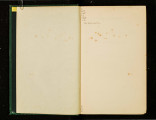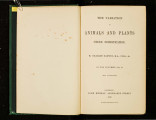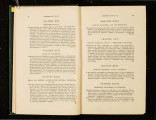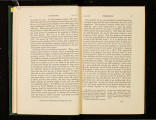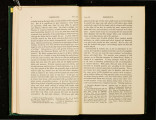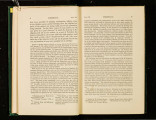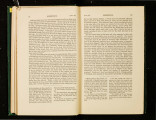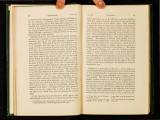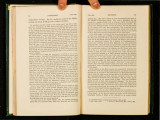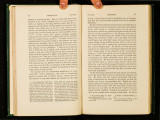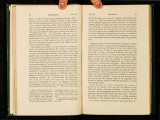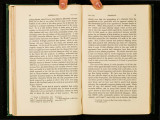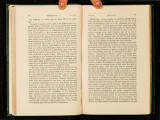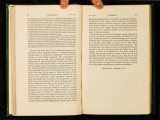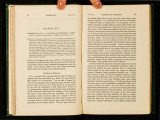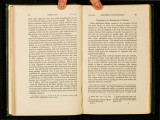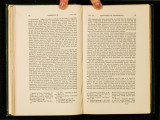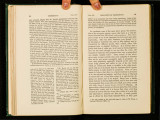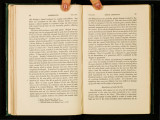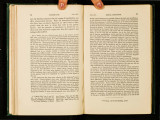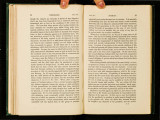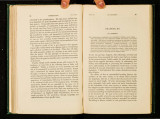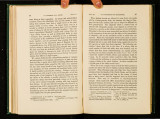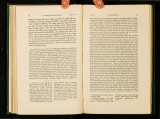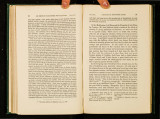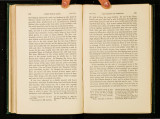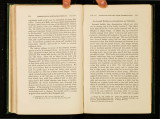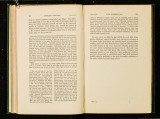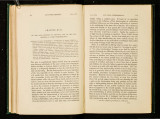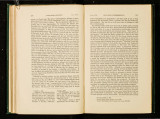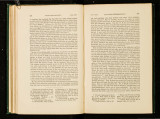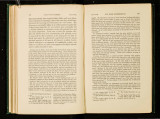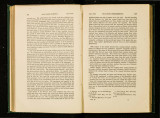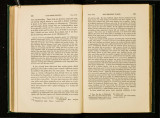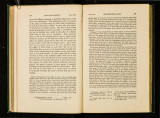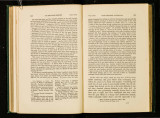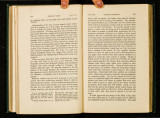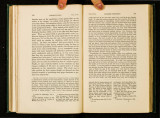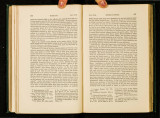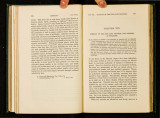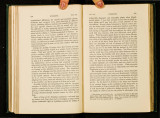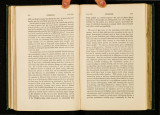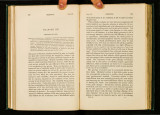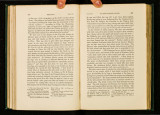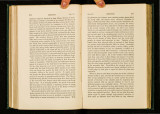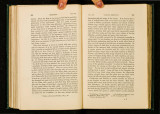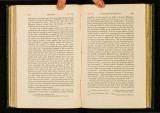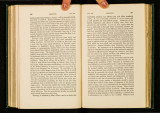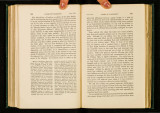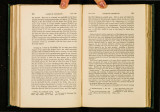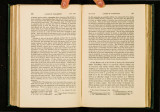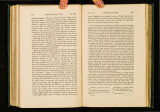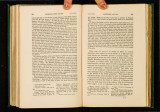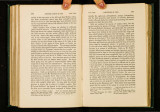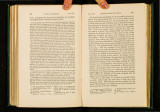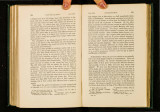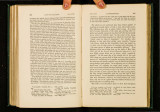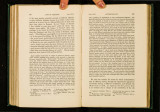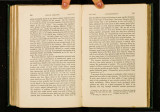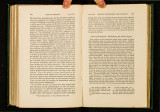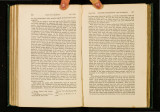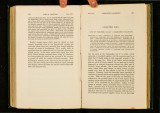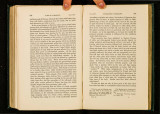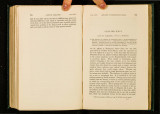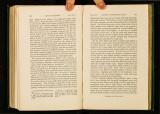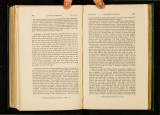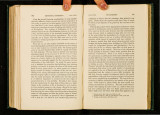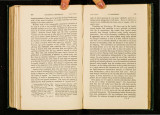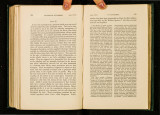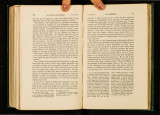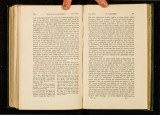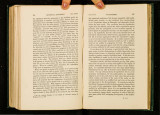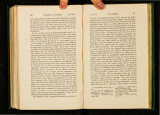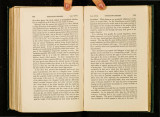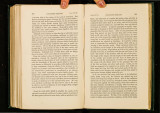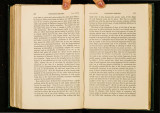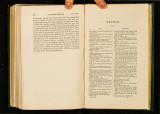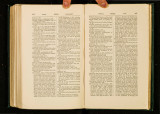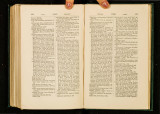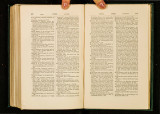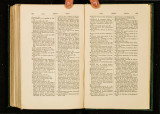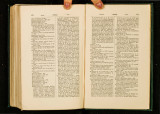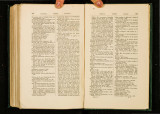| OCR Text |
Show - ~ -- 230 SELECTIOX. is certain that in a flock the white always first fall victims to the kite." In Belgium, where so many societies bave been established for the flight of carrier-pigeons, white is the one colou_r which for the same reason is disliked.21 On the other hand, It is said that the sea-eaale (Falco ossifragus, Linn.) on the west coast of Ireland picks 0 out the black fowls, so that "the villao ·ers avoid as much as possible rearing birds of that colour." 0 . • • l\f. Daudin/2 speaking of white rabb1ts kept . m . warrens m Russia, remarks that their colour is a great dtsadvantage, as • they are thus more exposed to attack, and ~an Tbe seen chn:ing bright nights from a distance. A gentleman m he~t, who fml~d to stock his woods with a nearly white and hardy kmd of rabL1t, accounted in the same manner for their early disappearance. Any one who will watch a white cat prowling a~ter her prey will soon perceive undor what a disadva~tage sh~ hes. . 'fhe white Tartarian cherry, "owing either to Its colour bemg so much like that of the leaves, or to the fruit always appearing from a distance unripe," is not so readily attacked by birds as other sorts. The yellow-fruited raspberry, which generally comes nearly true by seed, "is very little molested by Lirds, who evidently are not fond of it; so that nets may be dispensed with in places where nothing else will protect the red fruit." 23 This immunity, though a benefit to the gardener, would be a disadvantage in a state of nature both to the cherry and raspberry, as their dissemination depends on birds. I noticed during several winters that some trees of the ye1low-berriec1 holly, which were raised from seed from a wild tree found by my father, remained covered with fruit, whilst not a scarlet berry could be seen on the adjoining trees of the c0mmon kind. A friend informs me that a mountain-ash ( Pyrus aucuparia) growing in his garden bears berries which, though not differently coloured, are always dAvoured by birds before those on the other trees. This variety of the mountain-ash would thus be more freely disseminated, and the yellow-berried variety of the holly less freely, than the common varieties of these two trees. 21 W. B. Tegctml?ier, 'The Field,' Feb. 25, 1865. With respect to black fowls, see a quotation in Thompson's ' Nat. Hist. of Ireland,' 1849, vol. i. p. 22. n ' Bull. de la Soc. d' Acolimat.,' tom. vii. 1860, p. 350. 2~ ' Transact. Hort. Soc.,' vol. i. 2nd series, 1835, p. 275. For raspberries, see • Gard. Chronicle,' 1855, p. 154, and 1863, p. 245. CIIAP. XXI. NATURAL SELECTION. 231 Independently of colour, other trifling differences. ar~ sometimes found to be of importance to plants under cultivatiOn, and would Le of paramount importance if they had to fight their own battle and to struggle with many competitors. The thinshelled peas, called pois sans parchemin, are attacked by birds 24 much more than common peas. On the other hand, the purple-podded pea, which has a hard shell, escaped the attacks of tomtits (Parus rnafor) in my garden far better than any other kind. The thin-shelled walnut likewise suffers greatly from the tomtit.25 These same birds have been observed to pass over and thus favour the filbert, destroying only the other kinds of nuts which grew in the same orchard.26 Certain varieties of the pear have soft bark, and these suffer severely from boring wood-beetles; whilst other varieties are known to resist their attacks much better.27 In North America the smoothness, or absence of down on the fruit, makes a great difference in the attacks of the weevil, "which is the uncompromising foe of all smooth stone-fruits;" and the cultivator "has the frequ ent mortification of seeing nearly all, or indeed often the whole crop, fall from the trees when half or two-thirds grown." Hence the nectarine suffers more than the peach. A particular variety of the l\lorello cherry, raised in North America, is without any assignable cause more liable to be injured by this same insect than other cherry-trees.28 From some unknown cause, the vVinter Majetin apple enjoys the great advantage of not being infested by the coccus. On the other hand, a particular case has been recorded in which aphides confined themselves to the \Vinter Nelis pear, and touched no other kind in an extensive orchard.29 The existence of minute glands on the leaves of peaches, nectarines, and apricots, would not be esteemed by botanist::; as a character of the least importance, for they are present or absent in closely related sub-varieties, descended from the same parent-tree; yet there is good evidence30 that the 24 ' Gardener's Chronicle,' 1843, p. 806. 25 Ibid., 1850, p. 732. 26 Ibid., 1860, p. 956. 27 J. De J onghe, in ' Gard. Chronicle,' 18GO, p. 120. 28 Downing, 'Fruit-trees of North America,' pp. 266, 501: in regard to the cherry, p. 198. 29 ' Gardener's Chronicle,' 1849, p. 755. ao • Journal 0f Horticulture,' Sept. 26th, 1865, p. 25-! ; see other references given in olmp. x. |




